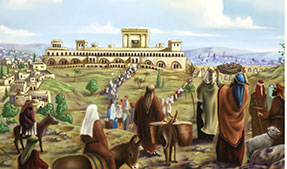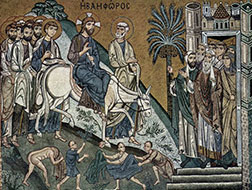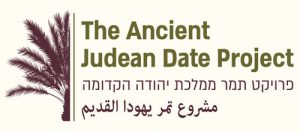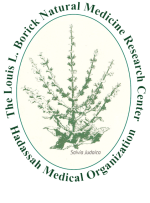The Righteous Shall Flourish Like the Palm Tree (Psalms 92:13)
The Date palm (Phoenix dactylifera) is mentioned many times in the Bible and was part of the ancient landscape of this region. One of the seven species considered native to the Land of Israel the Judean date palm appears on Judean coins and as a decoration in ancient synagogues. Fronds of the Judean date palm, and its fruits, were also brought by Jews on festivals such as Succoth (Tabernacles) to the Holy Temple in Jerusalem.

“The choice first fruits of your soil you shall bring to the house of the Lord your God…” (Exodus 34, 26)

Capernaum. A date palm on the wall of a synagogue from the 4th century.

The Judean date palm is also of great significance to Christians and Moslems. The disciples of Jesus are said to have welcomed him with branches of the date palm.
“They took in their hands palm branches and went forth to meet him…”
(New Testament, John 12:12).
In the Qur’an, the story is told (Sura 19) that when Miriam (Mary), the mother of the
prophet Jesus was on her way, “The labor-pains came upon her, by the trunk of a palm-tree.
She said, ‘I wish I had died before this and been completely forgotten’”. and she was told “Do not worry; your Lord has placed a stream beneath you. And shake the trunk ofthe palm-tree towards you, and it will drop ripe dates by you.”
This event is also depicted in the 5th century Kathisma, Byzantine Church whose ruins can still be seen on the road between Jerusalem and Bethlehem.









